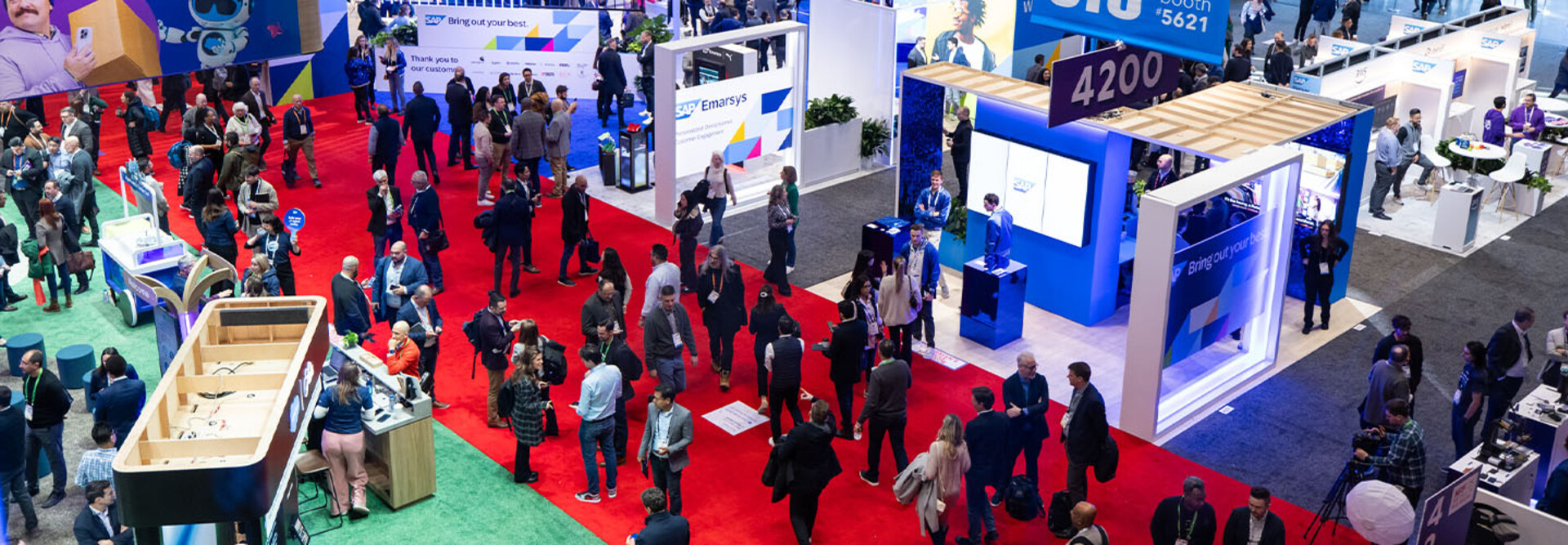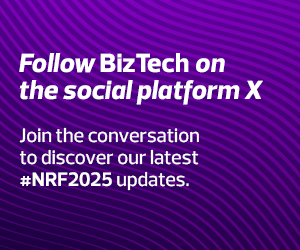1. Ease Self-Checkout with Produce Recognition
AI can recognize products visually, even without barcodes, enabling faster and smoother self-checkout processes. It’s early in its evolution, but this “produce recognition technology” combines “three big technologies: AI, computer vision and RFID,” said Matthew Guiste, global retail technology strategist at Zebra Technologies. “You’re going through self-checkout and instead of having to type ‘apple,’ the system can say, ‘Hey, this looks like it’s a Granny Smith apple. Can you confirm?’”
At NRF 2025, Zebra Technologies also unveiled a Mobile Computing AI Suite, “a comprehensive set of tools that includes an AI data capture software development kit” that allows customers, developers and independent software vendors to “integrate cutting-edge vision AI capabilities into their mobile applications,” according to a company press release. Toshiba announced its Modular eXpansion Platform, which allows IT leaders to “tailor a self-checkout solution that’s unique to your specific retail environment,” according to the company’s website.
“Self-checkout is a high visibility loss area so that’s what we’ve prioritized,” said Hinkle, noting that the added convenience also means less accountability. Toshiba’s new platform, which will come to market in spring 2025, has built-in fraud detection to catch incorrect scans or product misplacements. This would make it harder for a consumer to collect several items and pay for only one. The self-checkout system will say, “there's a bunch of objects here. They're not being scanned,” said Hinkle.
Retailers at NRF 2025 are also using Just Walk Out technology in systems such as Amazon Go. The AI and computer vision technology tracks products picked up and returned to shelves, enabling cashierless transactions. They are also equipping their stores with Verkada security cameras, which have network surveillance technology.
RELATED: Get the benefits of enhanced video in retail.
2. Enhance Loss Prevention and Security
As retailers innovate new solutions, security is still top of mind. In fact, loss prevention is the industry’s biggest priority. Shoplifting rose 24% in the first half of 2024, and Capital One Shopping predicts that it could cost retailers over $150 billion by 2026.
That’s why AI-powered surveillance is so critical to monitoring real-time store activity. If an unusual pattern, such as multiple failed barcode scans, is detected, the system alerts staff. Stores can also fight shrinkage by integrating AI detection with inventory systems to track missing items as they move off shelves.
“You can connect the computer vision cameras to POS data too,” Szanger said. “I can look and see, did someone hang out in that area for a long time? Did they purchase anything? And if not, did I send someone over to go help them? If I didn’t sell something but I’m missing inventory, retailers can look at the video and confirm exactly where the loss occurred.”
These cameras are also helping retailers investigate losses. “You can go to a search bar and say, show me all the video clips where someone had a red bag,” said Gina Cox, senior retail adviser at CDW. AI can recognize these prompts, analyze hundreds of clips and identify the person quickly. “It saves so much manpower. It’s going to allow people to find the history, the discovery of what they need so much faster.”
EXPLORE: These retail solutions and services from CDW can help your organization.
3. Make Returns and Exchanges Frictionless
Guiste noted that about 17% of retail items are returned. Returns can be a stress point for customers. However, computer vision technology can perform automated quality checks to assess the condition of returned products and flag any signs of damage or wear quickly. It’s also helping stores reduce fraud by detecting anomalies such as frequent returns or mismatched items.
Customers often dread returns because they assume the experience will be full of friction, Guiste explained. But these integrated and automated systems, which combine AI, radio-frequency identification and computer vision, are “making the experience better.”
“If you’re at home and you realize you need to change a size, you can start a digital return on the website or on an app, get a QR code, walk with that item into the store with that QR code, scan it, and just drop the item off,” Guiste said. “You don’t have to talk to anybody. Maybe you bought it online or bought it in the store, but it bridges the digital part of the return and the in-store part seamlessly.”
To learn more about NRF 2025, visit our conference page. You can also follow us on the social platform X at @BizTechMagazine to see behind-the-scenes moments.













